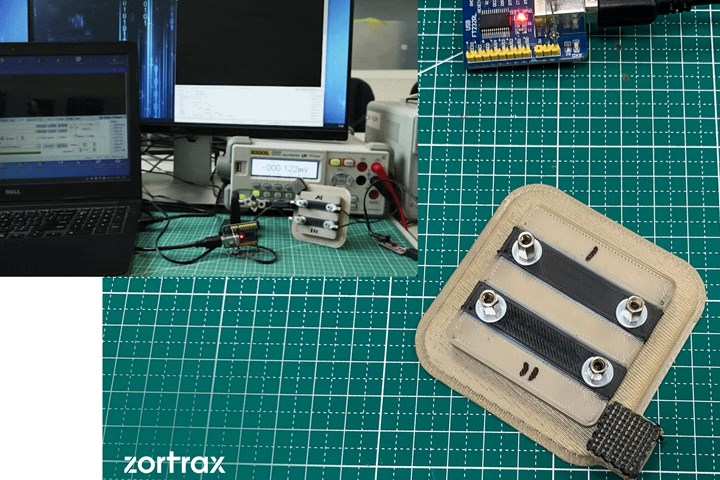Zortrax develops groundbreaking 3D Printing technology
High-performance parts are made out of two blends of PEEK filament via dual extrusion on Endureal industrial 3D printer.

Photo Credit: Zortrax
Zortrax (Olsztyn, Poland) introduces the first prototype composite parts made out of standard PEEK and experimental electrically conductive polyetheretherketone (PEEK) developed by the European Space Agency (ESA, Paris, France) and successfully fabricated on the Zortrax Endureal 3D printer. Composite, in this example, describes the use of two distinct grades of PEEK polymer that remain distinct in the printed part.
The LPD Plus dual extrusion technology used in the Zortrax Endureal printer has been traditionally used to print support structures using different material than the model itself. However, across the aerospace sector, there is an increasing demand for high-end composite parts 3D-printed out of two high-performance polymers. This is exactly what has now been achieved by Zortrax. To highlight what is possible with this new solution, Zortrax engineers used ESA’s experimental blend of electrically conductive PEEK in combination with pure PEEK to print proof-of-concept models with simple electricity and data transfer features on the Zortrax Endureal printer.
“Reducing weight is always one of the key design goals in aerospace engineering and it can be done by building parts which serve multiple purposes at once,” explains Michal Siemaszko, head of R&D at Zortrax. “In a standard airplane or spacecraft, you need to include both structural elements and wiring responsible for transferring energy or data between various systems. That is what we aim to solve with 3D printing PEEK components with electrically conductive paths. This way, the structural parts can at the same time perform electricity or data transfer functions without weight penalty incurred for additional wires. Imagine casting a solid steel slab that also works as a USB connector. That’s what the Endureal can do with high-performance polymers.”
“The Endureal can also print models with fiber-reinforced structures by interchangeably depositing two fiber-reinforced materials,” says Seimasko.
The Zortrax engineering team has increased the rigidity of the extrusion system which translates into even better dimensional accuracy. Other hardware changes have resulted in the Endureal’s reaching even higher operating temperatures, with the maximum extrusion temperature reaching 480°C. Maximum temperatures in the printing chamber and on the build platform can reach 200°C and 220 °C, respectively, to further reduce warping and shrinkage of high-performance materials. Printing composite parts out of two materials also required innovative changes in both firmware and software.
“The technology we are developing opens up a clear path to use the Zortrax Endureal for 3D printing smart components with built-in electrical circuits, all while retaining excellent thermal and mechanical properties of high-performance polymers like PEEK,” explains Zortrax CEO, Rafał Tomasiak. “This will make this printer a powerful tool in the hands of engineers and designers working for high-end and demanding applications like automotive, aerospace and space.”
Related Content
-
Hybrid process marries continuous, discontinuous composites design
9T Labs and Purdue applied Additive Fusion Technology to engineer a performance- and cost-competitive aircraft bin pin bracket made from compression-molded continuous and discontinuous CFRTP.
-
Hitachi Rail chooses Roboze printers, materials including carbon fiber/PEEK for railway spare parts
The Roboze ARGO 500 will be used at Hitachi Rail factories in Naples, Italy and Maryland, U.S. to reduce cost and delivery times for prototypes and spare parts.
-
Daher CARAC TP project advances thermoplastic composites certification approach
New tests, analysis enable databases, models, design guidelines and methodologies, combining materials science with production processes to predict and optimize part performance at temperatures above Tg (≈150-180°C) for wing and engine structures.















.jpg;maxWidth=300;quality=90)
